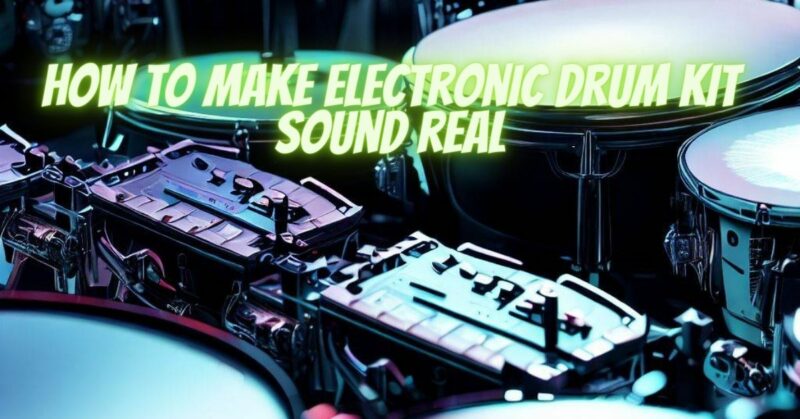Electronic drum kits offer versatility and convenience, but achieving a realistic drum sound can be a challenge. With the right techniques and adjustments, you can enhance the authenticity of your electronic drums and make them sound more like their acoustic counterparts. In this article, we will share valuable tips to help you make your electronic drum kit sound realistic. Let’s dive in!
- Use High-Quality Drum Samples: Invest in high-quality drum samples or sound libraries that closely emulate the sound of acoustic drums. These samples are typically recorded from professional drum kits and capture the nuances and dynamics of each drum and cymbal. Choose samples that suit your preferred genre and sound characteristics.
- Adjust Trigger Sensitivity: Fine-tune the trigger sensitivity settings of your electronic drum kit. This adjustment ensures that each hit is accurately detected and translated into the appropriate sound. Experiment with the sensitivity levels to find the right balance where it responds to your playing style without false triggering or missing hits.
- Focus on Natural Dynamics: Drumming involves a wide range of dynamics, from soft ghost notes to powerful accents. Emphasize the natural dynamics of your playing by varying the strength and speed of your strikes. Electronic drum modules often offer velocity sensitivity adjustments, allowing you to control the volume and timbre of each hit based on your playing intensity.
- Add Realistic Drumming Techniques: Incorporate authentic drumming techniques to make your electronic drums sound more realistic. Experiment with playing techniques such as ghost notes, buzz rolls, rimshots, and cymbal swells. These techniques add subtle nuances and articulations that mimic the natural sounds produced on acoustic drums.
- Customize Drum Kit Presets: Most electronic drum modules allow you to customize drum kit presets. Take advantage of this feature to create personalized drum kits that suit your desired sound. Adjust the tuning, muffling, and overall characteristics of each drum and cymbal to match your preferences. Spend time experimenting with different settings to find the sweet spots.
- Add Room Ambience: Simulate the natural ambience of a room by adding reverb or room simulation effects to your electronic drum sound. This helps create a sense of space and depth, similar to how acoustic drums interact with their environment. Adjust the reverb settings to replicate the desired room size and ambiance, whether it’s a tight studio or a large concert hall.
- Blend Electronic and Acoustic Sounds: Consider blending electronic drum sounds with real acoustic drum samples or recordings. This hybrid approach combines the convenience of electronic drums with the authenticity of acoustic drums. You can trigger acoustic drum samples alongside electronic sounds to add an extra layer of realism and depth to your drumming.
- Experiment with Mic Positioning: If your electronic drum kit allows for external microphone input, experiment with different microphone positioning techniques. Placing microphones strategically around your drum kit can capture natural room ambience and provide a more realistic sound. Explore techniques such as overhead miking, close-miking the snare and kick drum, and using room microphones to capture the overall drum sound.
Conclusion:
With careful attention to detail and the right adjustments, you can make your electronic drum kit sound remarkably realistic. Focus on using high-quality drum samples, adjusting trigger sensitivity, incorporating natural dynamics and techniques, customizing drum kit presets, adding room ambience, blending electronic and acoustic sounds, and experimenting with microphone positioning. By implementing these tips, you’ll be able to achieve a more authentic and satisfying drumming experience with your electronic drum kit.


